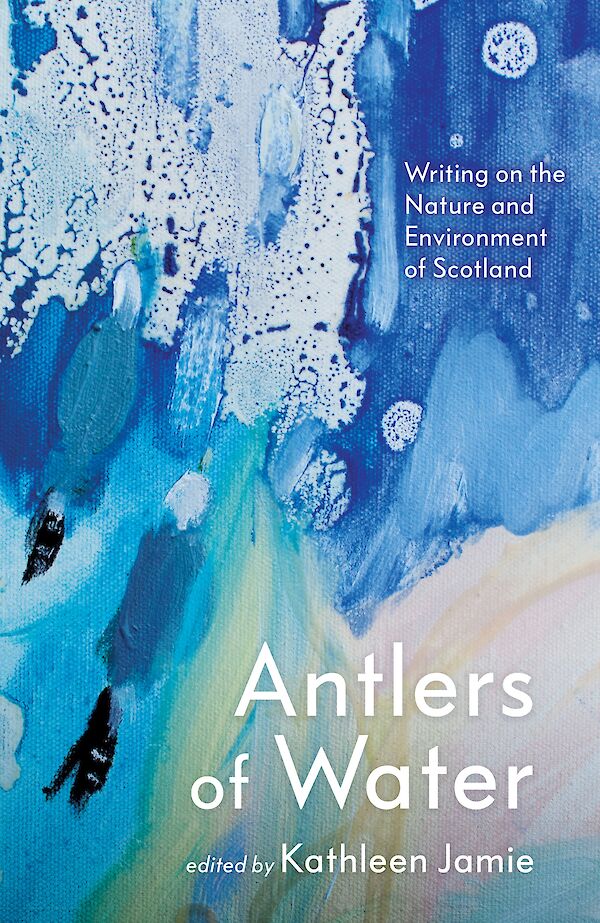Wee Back Gardens – a review of Antlers of Water


Antlers of Water, writing on the nature and environment of Scotland, edited by Kathleen Jamie (Canongate) – “the first modern anthology of Scottish nature writing”.
In an influential work of criticism published in 2008, the poet and essayist Kathleen Jamie questioned whether any part of Scotland could still be considered a wild
place. Those most photographed and celebrated wildernesses – Rannoch Moor, say, Knoydart, or the peatbogs of Sutherland – are in fact owned, contested, worked. “The whole landscape,” she wrote, “is man-made, deforested, drained, burned for grouse moor, long cleared of its peasants or abandoned by them.”
Jamie was writing in response to Robert Macfarlane’s The Wild Places, a book that cemented his reputation as this generation’s leading nature writer, and which she admired for its “honeyed prose” but resented instinctively for the manner in which parts of Scotland were positioned – through Sassenach eyes – as a sort of prelapsarian Eden, populated by no one.
Antlers of Water, a collection of writing on the nature and environment of Scotland, edited by Jamie and published in August, might therefore be considered a conscious corrective. It offers short essays, poetry and photography produced by those who “reside, or have resided” in Scotland. Some contributions are from well-established names (Jim Crumley, Amy Liptrot, Gavin Francis, Karine Polwart…) and emerging writers, all coming together in a book that aims to offer a more democratic vision of the greater whole: the many-headed reality of contemporary Scotland.
“If there is a Scottish attitude to our own country, well, that is for readers to decide,” she writes in the introduction. “I would only point out that the words ‘wild’ and ‘wilderness’ rarely occur.” Instead, she promises wind turbines, housing schemes, “wee back gardens”.
Initially, I admit, the prospect of a more surburbanised nature writing produced a faint flagging of the spirits. Call me a romantic, but I love those not-wildernesses where Macfarlane swam and climbed and slept under the stars. They may only be “theatrically empty”, as Jamie put it, but still they are places where the heart stirs and blood surges in the veins. Windswept epiphanies need not be the preserve of the English.
But I found my reluctance interrogated in the very first essay, in which Chris Powici, a former editor of Northwords Now, reflected upon the aesthetics of wind farms while cycling in the Braes of Doune. “Bird counts are all very well,” he argues, but the appearance of wilderness, this sense of departure from the manmade is not nothing. “We want – maybe even need – our wild places to look the part.” Still, he has no issue with the wind farm. For although he cannot ignore its presence, what he can do is adjust his way of seeing, attune himself to the remnants of wilderness – the red kites, the deer, the mountain hares – that live in its whirling shadows.
Elsewhere, Chitra Ramaswamy, in a moving triad of ‘meditations on absence’ reflects upon walks not taken, while pregnant and bringing up an autistic child. Hayden Lorimer, a professor of human geography at Edinburgh University, describes his explorations of an abandoned heritage centre, where “gorse creeps over and around the curving earthworks”, finding a new layer of history in the act of forming over the recent past.
I enjoyed too Jen Hadfield’s account of foraging for cockles, a work of fractured prose that offers vivid sensory images and flashes of humour, and Malachy Tallack’s reflections on love – how it can only grow and deepen when we accept the possibility that we might one day lose it – and its corollary in our relationship with the natural world in the era of climate change.
What caught me most off guard, however, were the offerings of the poets: Gary Mackenzie’s ‘conversation with a mountain’, itself in dialogue with an 18th century work of Gaelic poetry; Em Strang’s ‘Waters of Ae’ (“Don’t wait. / Stride out with your boots on or, better still, / barefoot”); Gerry Loose’s gilded fragments (“yellow mustard / & yellowed crusts of lichen // singing pink thrift”).
Though not all its contents sang, this book opened my eyes to the possibilities of contemporary nature writing. I suspect it will yours, too.
